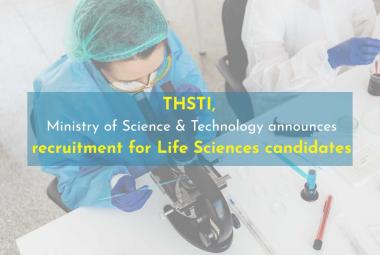About Authors:
Raj Mukherjee*, Koyel Sen, Dr. Ketousetuo Kuotsu**
* Department of Pharmaceutical Technology, Jadavpur University.
** Assistant Professor,
Department of Pharmaceutical Technology,
Jadavpur University.
* rajmukhrje@gmail.com
Abstract:
“Paclitaxel” is a potent mitotic inhibitor acting as anti-neoplastic agent, obtained as complex diterpins, termed “Taxanes” from the barks of Taxus breufolia (Pacific Yew). The oral bioavailability of the drug varies around 6-7% and has a strong protein binding capacity altering between 89% - 98%. Most of these drugs have a central role in metastatic ovarian and breast carcinoma, along with advanced head and neck cancer, small cell lung cancer, esophageal adenocarcinoma, hormone refractory prostate cancer, Kaposi’s Sarcoma and also in the prevention of recurrent narrowing of Coronary Stents. Paclitaxel mainly functions by improvising enhanced stabilization of microtubule polymers during cell division and binds specifically to the beta-tubulin subunits, thus antagonizing disassembly of the key cytoskeletal protein, producing abnormal arrays of microtubules throughout the cell cycle. Due to the poor aqueous solubility there is a need for the development of alternative formulations of paclitaxel with improved solubility and at the same time devoid of major toxic effects. Various approaches employed so far include cosolvents, emulsions, micelles, liposomes, microsphere nanoparticles, cyclodextrins, pastes, and implants. All these formulations have been prepared with specific aims to enhance bio-stability and reduce the basic toxic effects of Paclitaxel including low blood count, hair loss, peripheral neuropathy, anthralgias , myalgias, nausea, vommiting, mouth sores and various hypersensitivity reactions . The drug undergoes extensive CYP-mediated hepatic metabolism (majorly CYP2C8 with specific contributions from CYP3A4), and not more than 10% of a unit dose is excreted in the urine intact. We have tried to answer the probable mechanisms of Paclitaxel and how it can be made more bio-available in order to enhance its anti-cancer activities. Our review revealed the active ingredients that are co-administered with paclitaxel did not improve its functions but blocked the pathways that decreased the function of paclitaxel, since P-glycoproteins itself reduces the accumulation of paclitaxel and might use it as a substrate.
Reference Id: PHARMATUTOR-ART-1300
Introduction
Paclitaxel is a diterpenoid compound containing a complex 8-member taxane ring as its nucleus. The side chain linked to the taxane ring at C13 is essential for its antitumor activity. The taxanes have a molecular formula of C47H51NO14 and a molecular weight of 853.906 g/mol. Commercial varieties are usually semi-synthesized from 10-desacetylbaccatin, a precursor available in yew leaves.
(2α,4α,5β,7β,10β,13α)-4,10-bis(acetyloxy)-13-{[(2R,3S)- 3-(benzoylamino)- 2-hydroxy-3-phenylpropanoyl]oxy}- 1,7-dihydroxy-9-oxo-5,20-epoxytax-11-en-2-yl benzoate
Paclitaxel is available globally under the commercial names of Taxol,Anzatax, Aclixel, Asotax, Bristaxol, Praxel ,Onxal,Cryoxet & Taxol Konzentrat. Although, most compositions are prepared by dissolving in Cremophor EL (polyoxy ethylated Castor Oil), and delivered using ethanol, because of the cremophor solvent acute anaphylactoid reactions occour; pretreatment with dexamethasone, H1 and H2 antihistaminics are routinely used to suppress the reaction. Abraxane is a much newer formulation, delivered applying “Nanoparticle Albumin Bound Technology” and produces reduced side effects in comparison to Cremophor. The main problem of the anticancer drugs is their cytotoxicity, that destabilizes the functioning of the normal cells and thus delivery systems are being reviewed and researched to introduce anti-cancer drugs in a way to minimize toxicity.
Mechanism
It is essential to have an overview on the Cell cycle activities related to cell proliferation in order to understand the active mechanism of Paclitaxel. Normally somatic cells undergo a resting period during the G0 phase, and differentiate into functional cells which are no longer capable of division. But in case of active tumour cells, although the resting phase is more prolonged, the cells tend to enter a phase of relentless proliferation being activated by Cdks - Cyclin dependent kinases (Cdk3 in G0 phase & Cdk4, Cdk2, Cdk6 in G1 phase) and their corresponding regulatory cyclins. Although these Cyclin dependent kinases are inhibited by the p16 genes (Cyclin dependent kinase inhibitor 2A),in most cancer cells p16 genes have been found to be mutated, causing loss of action. This p16 gene modifies the activities of p14arf gene (alternative reading frame) {p19arf gene in mice} which in turn activates the p53 gene by inhibiting the mdm-2, also termed p53 tumor suppressor. They block the NH2 terminus of the trans-activation domain of the p53 gene and inactivate their mechanism. This p53 gene is itself responsible for anti-cancer activities like apoptosis(programmed cell death), genomic stability and angiogenesis that is the production of new blood vessels from pre-existing vessels; mainly functioning by the activation of p21 genes which inhibit the activity of cyclin Cdk2 by forming complexes with them. Modern researches also establish a strong correlation between the p16 gene and the pRb or retinoblastoma protein that utilizes the E2F Transcription factors to stabilize the G1 phase and restricts the damaged DNAs to replicate in the S phase.
In general structural proteins are not important drug targets. An exception is a protein called tubulin, which can polymerize into small tubes called microtubules. Microtubules which are developed and modified during the cell cycle are the main sites of action for Paclitaxel. Paclitaxel prefferentially acts by binding to the microtubules rather than tubulin dimers, unlike other anti-mitotics like Vincristine or Podophyllotaxins. Microtubules are hollow rigid dynamic structures that play a vital role to ensure cell shape and cell movements. These microtubules constitutes of a single type of globular protein termed tubulin, which is a dimer of two 55k-dalton polypeptides – α- and β-tubulin. γ-tubulin is also present but mostly in the centrosome portions and plays an important role in microtubular assembling. The tubulins polymerize from one end to another (α subunit of one tubulin dimer joins the β subunit of the next) in the protofilaments which form an aggregate and arrange themselves in helical structures. Each turn of the helix contains 13 tubulin dimers, each one evolving from different protofilaments in the aggregate. The ends of the microtubules are termed (+) & (-) depending upon α or β subunit respectively. These microtubules reorganize themselves during mitosis and produces dynamic instability within the cells. The process of mitosis is enhanced by the action of astral microtubules, originating from centrosome but do not connect to the kinetochore. They help in the formation of mitotic spindles which on their part is responsible for the separation of daughter chromosomes. The dynamic instability is caused by the co-presence of both the assembly and disassembly at the (+) end. During polymerization both the ends are attached to GTP molecules. While the (+) end is more stable, the (-) end is prone to hydrolysis, and converts to GDP. This GDP is one of the main reasons behind the dynamic instability. The most common effects of paclitaxel are the formation of microtubule bundles in interphase cells and spindle asters during mitosis. They suppress mitotic activity by arresting the dynamic changes and increasing the microtubular polymer mass when applied at higher concentrations, thus stabilizing the GDP bound tubulin and inhibiting chromosomes segregation.
Paclitaxel plays the vital role in anti-cancer treatment by the hyperphophorylation of the anti-apoptic agent Bcl-2(B-cell Lymphoma 2) attacking the serine residues at site 70 and 87 when they act on the microtubules.Thus being a tubule poison paclitaxel is able to kill the cancer cells that express Bcl-2. But to understand the phophorylation techniques, it is essential to establish a relation between the mitogen activated protein kinases that are capable of phophorylating the Bcl-2 and the anti-cancer drug Paclitaxel. The various kinases whose activities were reviewed includes JNK(c-Jun N-terminal Kinase), ERK (Extracellular Signal Related Kinase),Raf 1 & p38. To evaluate the role of JNK and its correlation with Paclitaxel, the efectivity of the JNK inhibitors needs to be discussed. If JNK activation was blocked by transfections with either a stress-activated protein kinase dominant-negative (K→R) gene (which prevents the activation of a kinase upstream of JNK) or MAPK phosphatase-1 gene (which dephosphorylates and inactivates JNK), Bcl-2 phosphorylation does not occur, and the cells are not killed by paclitaxel. It was seen that the cells treated with Paclitaxel produced a maximum kinase response at a much shorter time interval than in the absence of the drug. But similar treatmentwith ERK and p38 did not provide any supportive results for Paclitaxel.
In order to ensure the activity of Paclitaxel, the effect of JNK pathways on paclitaxel induced Bcl-2 phophorylation also needs to be considered.Experiments using a dominant-negative SEK1 (K→R) mutant suggested that the blocking of JNk pathway inhibited the Paclitaxel induced Bcl-2 phosphorylation and apoptosis. Recent studies also suggest that the activity of Paclitaxel includes activation of Raf 1 kinase which is also an essential for Bcl-2 phosphorylation and apoptosis. But the action is not immediate and takes a minmum time of 4 hours, while maximum effects required around 14-16 hrs, as the effectivity is dependent upon new RNA and Protein synthesis. These overexposure might increase the chances of cytotoxicity, but application of Actinomycin D or cycloheximide tends to reduce the cytotoxic effects.The action of Paclitacel although is independent of the p53 activity, yet indirect correlations can be cited as it might influence cell cycle progrssion following mitotic arrest. If a cell escapes mitotic arrest it can proceed to S phase with 8C DNA structure. So effectivity of p53 gene is necessary in such cases to avoid excessive proliferation.
NOW YOU CAN ALSO PUBLISH YOUR ARTICLE ONLINE.
SUBMIT YOUR ARTICLE/PROJECT AT articles@pharmatutor.org
Subscribe to PharmaTutor Alerts by Email
FIND OUT MORE ARTICLES AT OUR DATABASE
Modern Drug Delivery & Enhanced Bioavailability
Paclitaxel is generally administered as a 3-hour infusion of 135 to 175 mg/m2 every 3 weeks, or as a weekly 1-hour infusion of 80 to 100 mg/m2. Longer infusions (96 hours) have yielded significant response rates in breast cancer patients in preliminary trials(Wilson et al., 1994),but this form of treatment has serious practical limitations. This has instigated scope for newer research regarding the improved drug delivery and increase the bio-availability. The drug undergoes extensive CYP-mediated hepatic metabolism (majorly CYP2C8 with specific contributions from CYP3A4), and not more than 10% of a unit dose is excreted in the urine intact. The primary metabolite identified thus far is 6-OH paclitaxel, which is inactive, but multiple additional hydroxylation products are found in plasma. (Cresteil et al., 1994). Paclitaxel clearance is non-linear and decrease with increasing dose rate. In studies of 96-hour infusion of 35 mg/m2 per day, the presence of hepatic metastases greater than 2 cm in diameter decreased clearance and led to high drug concentrations in plasma and greater myelosuppression. Paclitaxel disappears from the plasma compartment with a half-life of 10 to 14 hours and a clearance of 15 to 18 L/hour per square meter. The critical plasma concentration for inhibiting bone marrow elements depends on duration of exposure, but likely lies in the range of 50 to 100 nM (Huizing et al., 1993).
Various approches so far to co-administer Paclitaxel along with other drugs or varying the delivering agents have produced variable but satisfactory outcomes. Although injectables are one of the most common administering procedures for Paclitaxel, orally coadministered paclitaxel is also in use. In order to improve the oral bioavailability of Paclitaxel,a novel P-glycoprotein inhibitor, KR30031 along with ketoconazole(inhibitor of hepatic metabolism),when coadministered with paclitaxel produced an increment from 4.6% to 34.4% in bioavailability (Woo et al.,2002).P-glycoprotein blocker SDZ PSC 833 also produced favourable results in mice. (van Asperen et al,1997) It was also observed that about 54% of the free Paclitaxel was extruded to the gut lume by P-glycoprotein. Inhibition of P-glycoprotein produced much improved results. But on the other hand it should be kept in mind that these P-glycoprotein inhibitors are pharmacologically active and might produce undesired activities.
Researches to enhance oral bioavailability of Paclitaxel led to the application of Paclitaxel loaded Lipid Nanoparticles (LNC).(Peltieret et al.,2006).The oral bioavailability were reported to increase about 3 folds when applied through Lipid Nanoparticles(60±1.5 nm).Solid-lipid nanoparticles also produced some improved results in oral bioavailability. Paclitaxel loaded with solid lipid nanoparticles using stearylamine as liquid and soya lecithin and poloxamer 188 as emulsifiers,(Pandita et al.,2011) produced a high mean C(max) than that of free Paclitaxel.
Micelle preparations of N-octyl-O-sulfate chitosan with paclitaxel produced about 6 fold diffences in vitro. N-octyl-O-sulfate chitosan unlike other P-glycoprotein inhibitors interferes and attacks P-glycoprotein ATPase rather than reducing the P-glycoprotein expression.(Mo et al.,2011). N-deoxycholic acid-N, O-hydroxyethyl chitosan (DHC) micelles when loaded with Paclitaxel was also found to produce almost three fold better oral bioavailability of the drug than free Paclitaxel.Single pass intestinal perfusion studies revealed the absorption of the drug via endocytosis in a saturable process through a P-glycoprotein independent pathway(Li et al.,2010).
Combinations with anti-oxidants like curcumin has also produced improved oral bioavailability of Paclitaxel especially when applied in nanoemulsions especially to SKOV3 tumors by the down regulation of P-glycoproteins and P4503A2 protein levels. The effectivity of curcumin itself as an anti-cancer agent might also produce synergistic effect with paclitaxel as the combination tended to increase a 5.2 fold bioavailability. But the most importanat issue regarding the administration of the combination is the absence of acute toxicity.(Ganta et al.,2010).
Multifunctional Drug delivery system like folic acid modified and TAT peptide conjugated PEGylated polymeric liposomes (FA-TATp-PLs) nanoparticles loaded with Paclitaxel although shows specific toxicity in KB cells, overall invitro toxicity was much lesser,and thus more modifications are prepared for its delivery.(Niu et al.,2011).Paclitaxelloaded polymeric nanoparticles composed of poly(D,L-lactic-co-glycolic acid) (PLGA) with vitamin E TPGS can be used as emulsifier for oral chemotherapy.Such a NP formulation achieved more than 10 times higher oral bioavailability than Taxol, which resulted 9.74-fold higher therapeutic effect and 12.56-fold longer sustainable therapeutic time than Taxol.(Zhao et al.,2010).
Flavone Glycosides like Naringin, flavonol like Quercetin and other flavone derivatives has also yeilded better bioavailability in combination with Paclitaxel.They also follow similar mechanisms of inhibiting Cytochrome P-450 & P-glycoprotein efflux pump.
Conclusion & Discussion
Most of the drug delivery systems which are considered to provide better Bioavailability were found mostly to be specific combinations of Paclitaxel with other drugs or specic antagonists of P-glycoprotein and Cytochrome P 450. But most drugs inhibiting them in combination with Paclitaxel has produced much less toxicity than the free drug itself.It can be concluded although Paclitaxel plays a vital role in phosphorylation of Bcl-2 and inhibiting disasembly of the microtubules,enhanced bioavailability was independent of its action on the microtubule,as most application tended to either inhibit the P-glycoproteins or avoid that pathway.So it can be stated the active ingredients that are co-administered with paclitaxel did not improve its functions but blocked the pathways that decreased the function of paclitaxel,since P-glycoproteins itself reduces the accumulation of paclitaxel and might use it as a substrate.
References
- Boesch D,Gav6riauxC,JachezB,Pourtier-ManzanedoA,BollingerPandLoorF (1991)In vivo circumvention of P-glycoprotein-mediated multidrug resistance of tumor cells with SDZPSC833 .CancerRes51:4226-4233 .
- CroopJ M, Raymond M, Haber D, Devault A, Arceci RJ ,Gros Pand Housman DE (1989)The three mouse multi drug resistance(mdr)genes are expressed in a tissue-specific manner in normal mouse tissues. MolCellBiol9:1346-1350
- Dorr RT(1994) Pharmacology and toxicology of cremophor EL diluent. Ann Pharmacother 28:sIl-s14.
- Eiseman JL, Eddington ND, Leslie J,McAuley C, Sentz DL , Zuhowski M, Kujawa JM, Young Dand Egorin MJ(1994) Plasma pharmacokinetics and tissue distribution of paclitaxel in CD2F1mice. CancerChemotherPhannacol34: 465-471.
- Fisher GA, Lum BL, Hausdorff J and Sikic BI (1996) Pharmacological considerations in the modulation of multidrug resistance.EurJCancer32A:1082-1088.
- Fujita H, Okamoto M, Takao A, Mase H and Kojima H (1994). Pharmacokinetics of Paclitaxel in experimental animals. Part I. Bloodlevel(Japanese).KantoKagaku Ryoho 21:653-658
- Harris JW, Rahman A, Kim BR, Guengerich F P and Collins JM(1994)Metabolismof taxol by human hepatic microsomes and liver slices: participation of Cytochrome P450 3A4 and an unknown P450enzyme. CancerRes54: 4026-4035
- Huizing MT, Sewberath Misser VH, Pieters RC, Ten Bokkel Huinink WW, Veenhof CHN, Vermorken JB, Pinedo HM and Beijnen JH(1995) Taxanes: anewclass Of antitumor agents. CancerInvest13:381-404
- Keller RP, Altermatt HJ, Nooter K, Poschmann G, LaissueJA , Bollinger P and Hiest and PC(1992) SDZPSC833, anon-immunosuppressive cyclosporine:its potency in overcoming P-glycoprotein-mediated multidrugresistance of murineleukemia.IntJCancer50:593-597.
- J van Asperen, O van Tellingen, A Sparreboom, AH Schinkel, P Borst, WJ Nooijen and JH Beijnen (1997); Enhanced oral bioavailability of paclitaxel in mice treated with P-glycoprotein blocker SDZ PSC 833. British Journal of Cancer 76(9), 1181-1183
- Peltier, Sandra; Oger, Jean-Michel; Lagarce, Frédéric; Couet, William; Benoît, Jean-Pierre (2006). "Enhanced Oral Paclitaxel Bioavailability After Administration of Paclitaxel-Loaded Lipid Nanocapsules". Pharmaceutical Research 23 (6): 1243–50. doi:10.1007/s11095-006-0022-2. PMID 16715372.
- Goodman, Jordan; Walsh, Vivien (2001). The Story of Taxol: Nature and Politics in the Pursuit of an Anti-Cancer Drug. Cambridge University Press. p. 17. ISBN 052156123X.
- Wall, ME; Wani, MC (1995). "Camptothecin and taxol: Discovery to clinic--thirteenth Bruce F. Cain Memorial Award Lecture". Cancer research 55 (4): 753–60. PMID 7850785.
- Wani M, Taylor H, Wall M, Coggon P, McPhail A (1971). "Plant antitumor agents. VI. The isolation and structure of taxol, a novel antileukemic and antitumor agent from Taxus brevifolia". J Am Chem Soc 93 (9): 2325–7. doi:10.1021/ja00738a045. PMID 5553076.
- Fuchs, David A and Johnson, Randall K (1978). "Cytologic evidence that taxol, an antineoplastic agent from Taxus brevifolia, acts as a mitotic spindle poison". Cancer Treatment Reports 62 (8): 1219–22. PMID 688258.
- Rowinsky, EK and others (1988). "Phase II study of taxol in advanced epithelial malignancies". Proceedings of the Association of Clinical Oncology 7: 136.
- "Technology Transfer: NIH-Private Sector Partnership in the Development of Taxol" (PDF). Nader, Ralph; Love, James. "Looting the medicine chest: how Bristol-Myers Squibb made off with the public's cancer research." The Progressive. February, 1993. Retrieved on March 9, 2007.
- Bristol-Myers Squibb, The development of TAXOL (paclitaxel), March 1997, as cited in Goodman & Walsh 2001, p. 2
- Zhao K. et al (2004). "Study on the Preparation and Regeneration of Protoplast from Taxol-producing Fungus Nodulisporium sylviforme'" (PDF). Nature and Science 2 (2): 52–9. http://www.sciencepub.org/nature/0202/09zhao.pdf.
- Ottaggio, Laura; Bestoso, Federica; Armirotti, Andrea; Balbi, Alessandro; Damonte, Gianluca; Mazzei, Mauro; Sancandi, Monica; Miele, Mariangela (2008). "Taxanes from Shells and Leaves ofCorylus avellana". Journal of Natural Products 71 (1): 58–60. doi:10.1021/np0704046. PMID 18163585.
- Bharadwaj, Rajnish; Yu, Hongtao (2004). "The spindle checkpoint, aneuploidy, and cancer". Oncogene 23 (11): 2016–27. doi:10.1038/sj.onc.1207374. PMID 15021889.
- Jordan, MA; Wilson, L (2004). "Microtubules as a target for anticancer drugs". Nature reviews. Cancer 4 (4): 253–65. doi:10.1038/nrc1317. PMID 15057285.
- Heldman, AW; Cheng, L; Jenkins, GM; Heller, PF; Kim, DW; Ware Jr, M; Nater, C; Hruban, RH et al (2001). "Paclitaxel stent coating inhibits neointimal hyperplasia at 4 weeks in a porcine model of coronary restenosis". Circulation 103 (18): 2289–95. PMID 11342479.
- Ozcelik, Bulent; Turkyilmaz, Cagdas; Ozgun, Mahmut Tuncay; Serin, Ibrahim Serdar; Batukan, Cem; Ozdamar, Saim; Ozturk, Ahmet (2010). "Prevention of paclitaxel and cisplatin induced ovarian damage in rats by a gonadotropin-releasing hormone agonist". Fertility and Sterility 93 (5): 1609–14. doi:10.1016/j.fertnstert.2009.02.054. PMID 19339002.
- Medline Plus Entry for Paclitaxel Injection." MEDLINE. Last Reviewed 09/01/2008. Accessed 10-2-21.
- Boghigian, Brett A.; Myint, Melissa; Wu, Jiequn; Pfeifer, Blaine A. (2011). "Simultaneous production and partitioning of heterologous polyketide and isoprenoid natural products in an Escherichia coli two-phase bioprocess". Journal of Industrial Microbiology & Biotechnology 38 (11): 1809. doi:10.1007/s10295-011-0969-9.
NOW YOU CAN ALSO PUBLISH YOUR ARTICLE ONLINE.
SUBMIT YOUR ARTICLE/PROJECT AT articles@pharmatutor.org
Subscribe to PharmaTutor Alerts by Email
FIND OUT MORE ARTICLES AT OUR DATABASE









